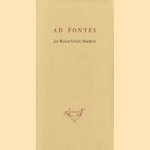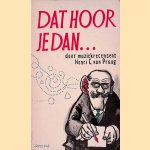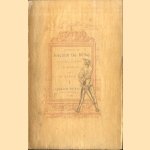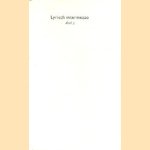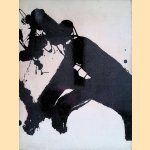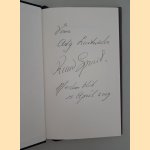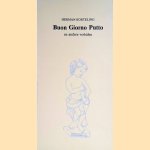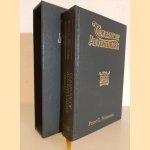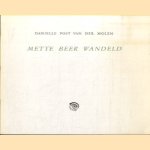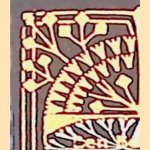
Onze boeken
Altered postcards
Door Aldous Eveleigh
Categorie | Speciale uitgaven |
|---|---|
Boeknummer | #234225 |
Titel | Altered postcards |
Auteur | Eveleigh, Aldous |
Boektype | Gebonden hardcover |
Uitgeverij | Berlin/London, The artist |
Jaar van uitgave | 1989 |
Taal | Engels |
Beschrijving | Manuscript (in black pen and ink) title, 22 mounted col. plated by A. EVERLEIGH, printed in 150 numbered copies, this is number 092, orig. cl. w. mounted plate on frontcover. |
Samenvatting | Berlin Altered Postcards Melanie from London wrote on 7th October to say she had a copy of Berlin Altered Postcards, edition number 101 out of 150, and asked if I could tell her anything more about it. An artist's book The work dates from 1989 when I had a studio in Berlin. It is a set of painted-on picture-postcards of the city, a type of intervention I call “dubbed photographs”. The technique mixes painting with the base photograph to make two co-existing yet very different pictures. The new painting appropriates and attaches itself, mirage-like, to the original photograph. When we flip between seeing one and then the other image, we turn from reading the photographic reality to using the visual language of modern art to get what the painting is about. Not ever... (Lees verder)yone is able to make the connection between the two ways of seeing, the two states of mind, for these peeps there is no big reveal. It does surprise me when someone is unable to make out what's happening but it's not a problem for most people. When we make the switch from the form of the photograph to see what is depicted in the painting, what we are exercising is our ability to change our perspective on things. A good idea, it used to be, but now is right out of style. Minds want to stay in their bubble. Whether we appreciate, or are even aware of it, we find we can make this change of perception with sometimes the most minimal of interventions. The altered Berlin postcards are a style of over-painting, which I began in the early 1980's, reworking catalogue photographs of room sets and furniture ads to incorporate and to change them into other images. Scenic postcards have a similar all-purpose air about them as glossy furniture advertisements do – bland, polished, generic photographs with high production values exciting little, or only a very particular, artistic interest – being so unremarkable and uniform they are easy to change, prime ground to make something else out of. The Berlin series is a development on those first experiments, where I was painting on staged photographs of interiors, in being a commentary on and about my observations of Berlin and in having a theme:- to make a portrait of the place. A portrait of a person is usually from one perspective but a portrait of a city has many, it has to come from different angles. No one picture can capture every aspect and not every aspect can be pictured but a portrait of a city will face what lies within and between its margins. The paintings get under the skin of the city, paradoxically, by reworking its surface appearance. Literally surreal but figuratively satirical, they work better as a series, the whole work together, all of a piece. Although hanging on a gallery wall each one is strong enough in itself to stand alone, the accumulative effect of (looking at) several together gives more of a sense of the life and soul of the place at the time from my perspective in West Berlin. Seen as a portrait, the collection is perhaps the last portrait of the divided city before the wall came down. The fall of The Wall was overwhelmingly exciting but only in the sense of a surprise birthday party was it unexpected, at least to me. As an outsider and a very occasional visitor it was obvious there were so many changes going on compared to how things were in former times that I kept asking everyone I met who lived there, “What will happen when The Wall comes down?” “Oh, that won't happen for another ten, twenty years.” Everybody, but everybody replied. Yet even while acknowledging that in only a couple of years their thinking about any opening of the border had changed radically, going from it will never happen to if / when…, and despite all the indications from the other side of a changing, softening even, of the DDR regime, or the significance of events like the mass peace marches, it was never going to be enough to alter the situation on the ground. The assumption on the part of West Berlin seemed to be that it was their business, good luck to them, over on the other side, but it wasn't much going to affect the border. Although all agreed a shift had occurred, folk would simply shrug their shoulders when I said, “Shouldn't West Germans be planning for when The Wall comes down?” Most weeks I would go over for a day in the East, mostly I'd stay in Berlin though occasionally I'd take a train to Leipzig. I'd go to walk and draw, visit museums, sit in cafes, listen to people talk, explore. East Berlin reminded me of London in the old days, run down and shabby, with surly service everywhere, everything “Off!” on the menu, the dead-pan humour of the customers joshing the implacable waitresses. In contrast to shiny, well-tended and stocked West Berlin, East Berlin felt more like home. Unrecognisable now, both that picture of London with a declining population and Berlin as a divided city – London really set about catching up with its continental cousins in the 1990's – and the picture of Berlin? There's precious little grime left in downtown Berlin now. On the ground it's a seamless transition from centre to suburbs (where the difference lies) only in the mind-sets and at night from the air, the line between where the patches of different colour, orange and white, street lamps meet, still in place from the old East West days, can one see clearly the shape of the old divide. While my atelier was in the West I would buy paper, ink and oil paint in the East. Art materials were about the only thing you could buy there. Every other shop I tried, it didn't matter whether they had lavishly well-stocked windows or more paltry, sad-looking arrays, it was always the same story, on going in to try to purchase something I'd be told, “Nein.” Sometimes apologetically, often not, the voice from behind the counter would explain that all of what you see is only for display. Understandably they weren't about to sell what was in short supply to a westerner who, they knew from watching television, had all and more of everything that they could only dream of. So coming back through Checkpoint Charlie with bulging bags full of what felt like contraband – the ten for one Mark exchange rate made the already inexpensive, good-quality art materials a tenth of the price – I always imagined I'd be questioned about what I was carrying. When crossing over, the border guards always acted heavy with my identity papers, being as intimidating as they could be, every time. But about the heavy carrier bags cutting into my hands and fingers, the packs of paper filling my arms, they said nothing. I wondered whether it was an instance of the prevailing new mood. Or perhaps it was simply because there were no customs officers and it was not their job to do it. Or maybe the bags of swag were actually invisible to them. Knowing it was impossible for a westerner to buy anything it could have been a case of what you don't expect to see isn't there, invisible. In a way, much the same thing happened when I first began to show my dubbed photographs, although appreciated by artists and friends who were used to my work, critics and other art world people were often flummoxed. Baffled by what they were presented with and (not) seeing, several voiced complaints that one didn't know what one was supposed to be looking at, let alone for. Then things changed, and I began to hear less of that kind of response. One reason for the change, I thought, was the growing popularity of Transformers spilling over into the mainstream. Whatever caused it, the idea of one thing morphing into another began to crop up everywhere. Broadening to where my stop-motion film “NewYork NewWork” was taken and used as inspiration by the agency behind the production of one of the World's most expensive car advertisements* and in the world of entertainment, framed, enlarged copies of the Berlin altered postcards furnish the family home in the Paddington Bear films. With my cutting edge credentials thus compromised, how this work comes across today I can't say, it's a matter that is in the hands of the viewer looking at the pictures on the pages of this book. The meaning of a work changes over time, if it can still answer questions (which the artist never imagined would be asked of it) then it continues to live. I can't speak for the way the dubbed photos work on anyone else but I do know how the interventions occur. First I go out to draw and paint and fill myself with the shape, sound, smell of the city. Next, back in the studio I have a picture postcards pinned to the wall near where I'm painting so I can see them. Once in a while, between standing at the easel and walking back to look at the canvas, out of the corner of my eye I catch a glimpse in a photo of something half-seen. Then turning I give it a bit of shape and form. This miss-seen image is an unconscious actualisation of some aspect of the city I've absorbed or observed which arises like an event reshaped in a dream that on reflection I realise stands as a metaphor for a sensed reality I would not otherwise have been able to picture. Simply, I view the photographic surface as an abstract pattern, as if it were an inkblot or an old and weathered wall, and then do as Leonardo da Vinci famously advised – allow my imagination to see mountains, rivers, cities, people, creatures great and small. Then, well, it would be easier if I fixed the image I've found there more clearly and unambiguously but I like to have it half-hanging there. Why, when a seamless retouching of the photograph would do the trick and make the illusion jump out so much more effectively do I use broad brush-strokes, loaded with oil paint, so at odds with the smooth printed surface that the image almost cancels itself out? Because I want the either or effect, the quantum idea where you see either one thing or another. I'm not trying to bring the new picture out of the background to force it into view, to fix and isolate it. It's more that, in the best examples, I suspend the new reading, the alternative image, between a few broad brush-strokes and treat details of the photograph as if they are already painted areas. Visually I want the work to hover between two states, one which has the effect of spoiling the photograph or the other which makes a much more interesting painting. The book was put together by hand. Cut, stitched and glued. From trimming archival paper to page-size for the bookbinder, all the way through to writing with brush and ink the title of each picture on every page, it was a labour-intensive book to produce. Much the same as any art show involves, a lovely idea always takes a lot more extra work to realise. While it was being put together I declared the book to be a gallery space. When asked where I'm showing next? I'd answer, “I'll be holding an exhibition in your hand.” I can declare anything I like it doesn't mean it has any effect. People will continue to think they are holding something like a photo album or catalogue in their hand. It's true in an art gallery you experience these paintings differently, for a start you can view them from a distance and see what the painting is doing, you can make-out the image more easily from afar than looked at up close. It's another kind of connection – in our tool-making hands we see dimensions. On the wall you see the pictures for the size they really are. That doesn't happen with a book. The number of times people would ask me as they turned the pages, “How big are these pictures really?” Was often, and when I replied, “They really are that size.” Almost as many would think I was toying with them and keep on asking, “No, not here in the book, in real life, how big are they?” Getting irritated when I reiterate or try to explain. Eventually, to deflect the issue, I took to answering, “They are postcards 3 metres x 2 metres.” Which curiously, was always accepted without question. Which also meant, in the way of things, I would actually have to make them to see. So 2m x 3m became the dimensions, the real size of seven of the series I painted for a big travelling exhibition two years later. After trying alternative ways of how to present the work – to keep it of a piece and retain its intimate nature (with its sense of the monumental) I had to admit a book was the answer. It was to have the look of one of my sketchbooks, unassuming yet precious. The reproductions are analogue laser prints (a redundant technology) which captures the texture of the oil paint better than any other method. The books were sold privately and in galleries including The Guggenheim Museum shop in Manhattan. I hope this little bit of background to the book will be of some help and interest. Thank you. |
Pagina's | - |
Conditie | Goed |
Prijs | € 85,00 |
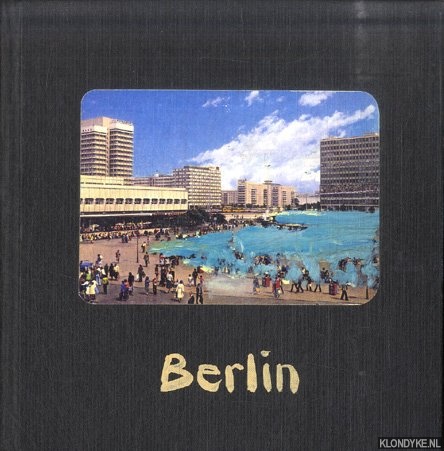
Onze gebruikte boeken verkeren in goede tweedehands staat, tenzij hierboven anders beschreven. Kleine onvolkomenheden zijn niet altijd vermeld.

